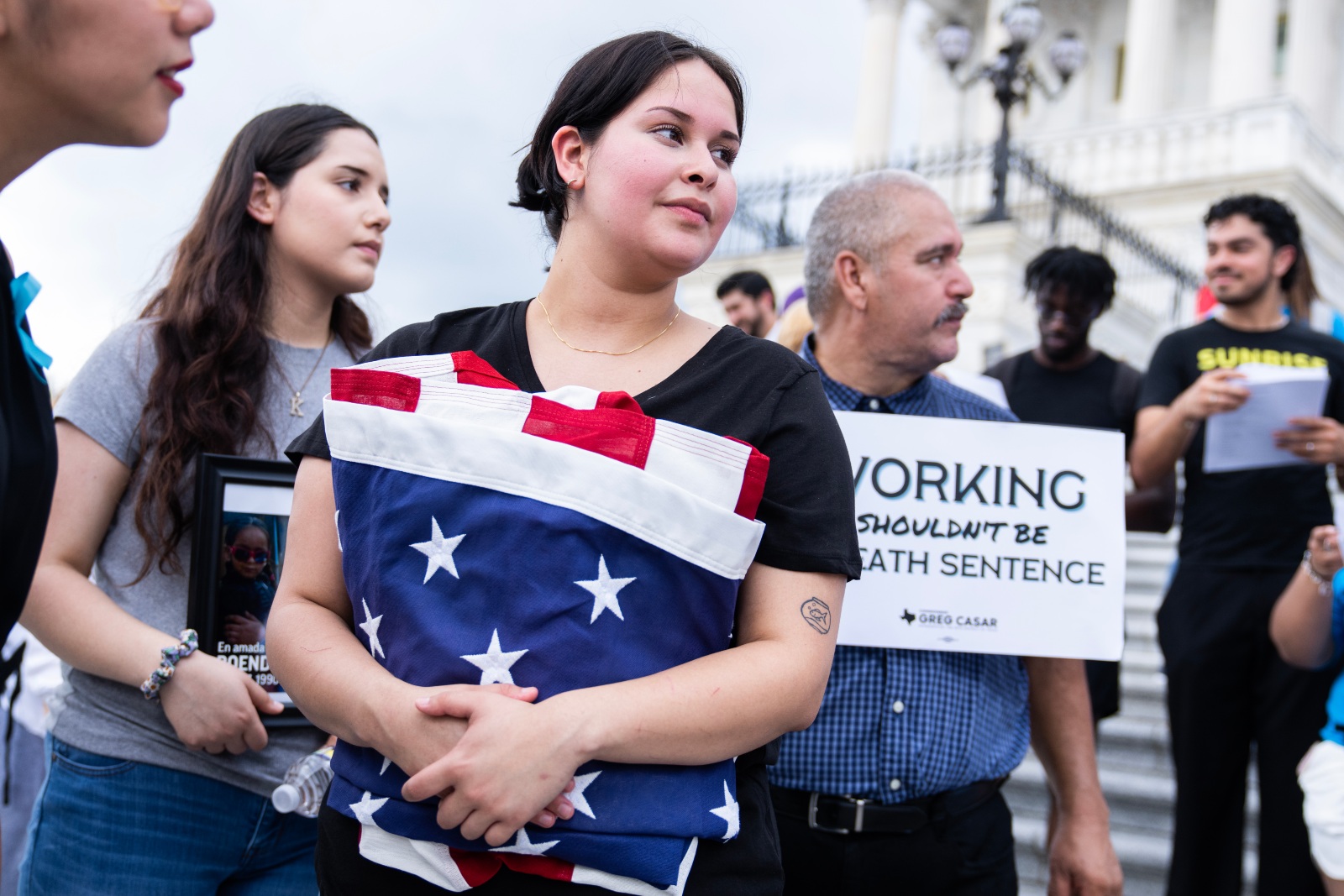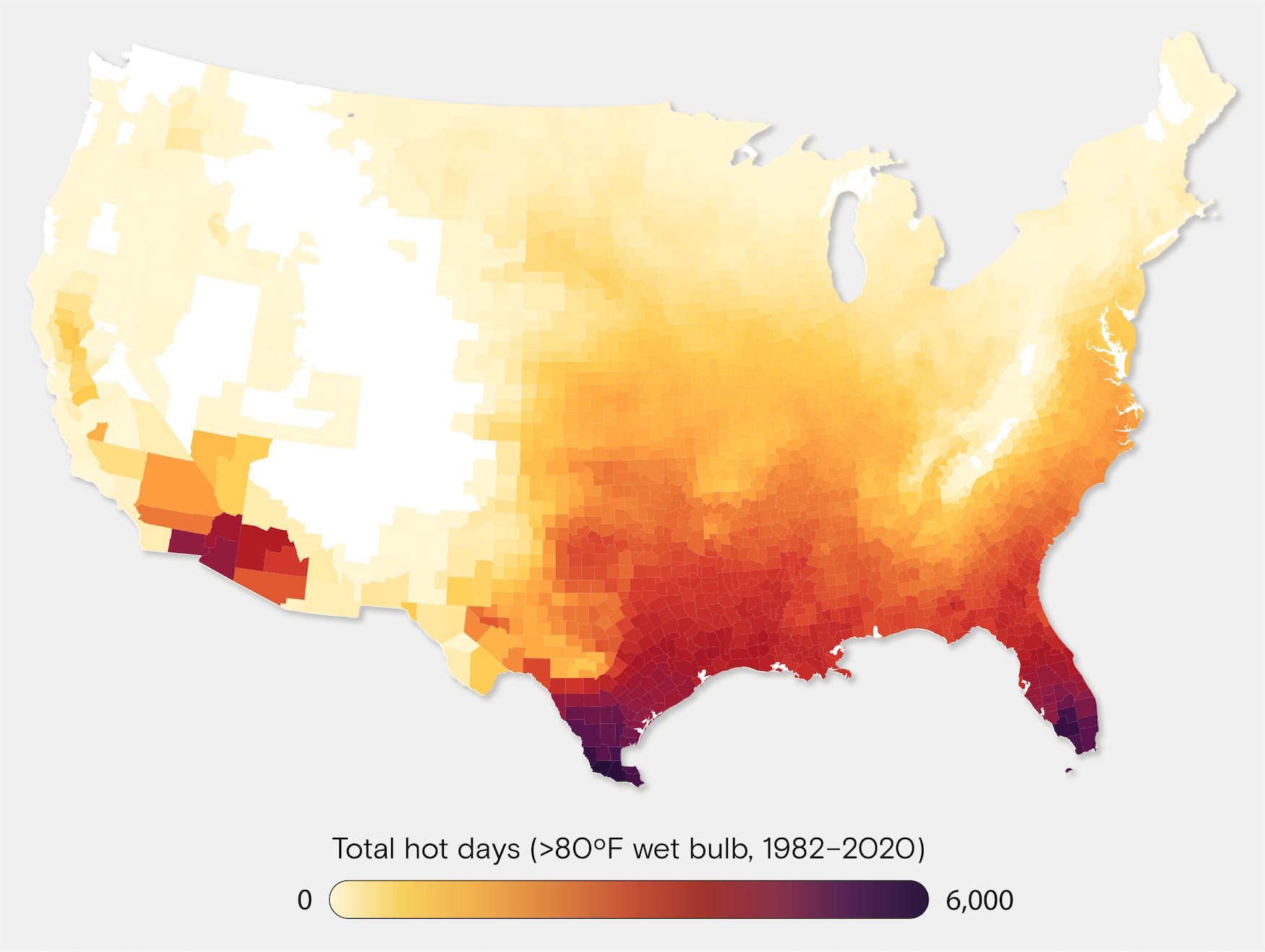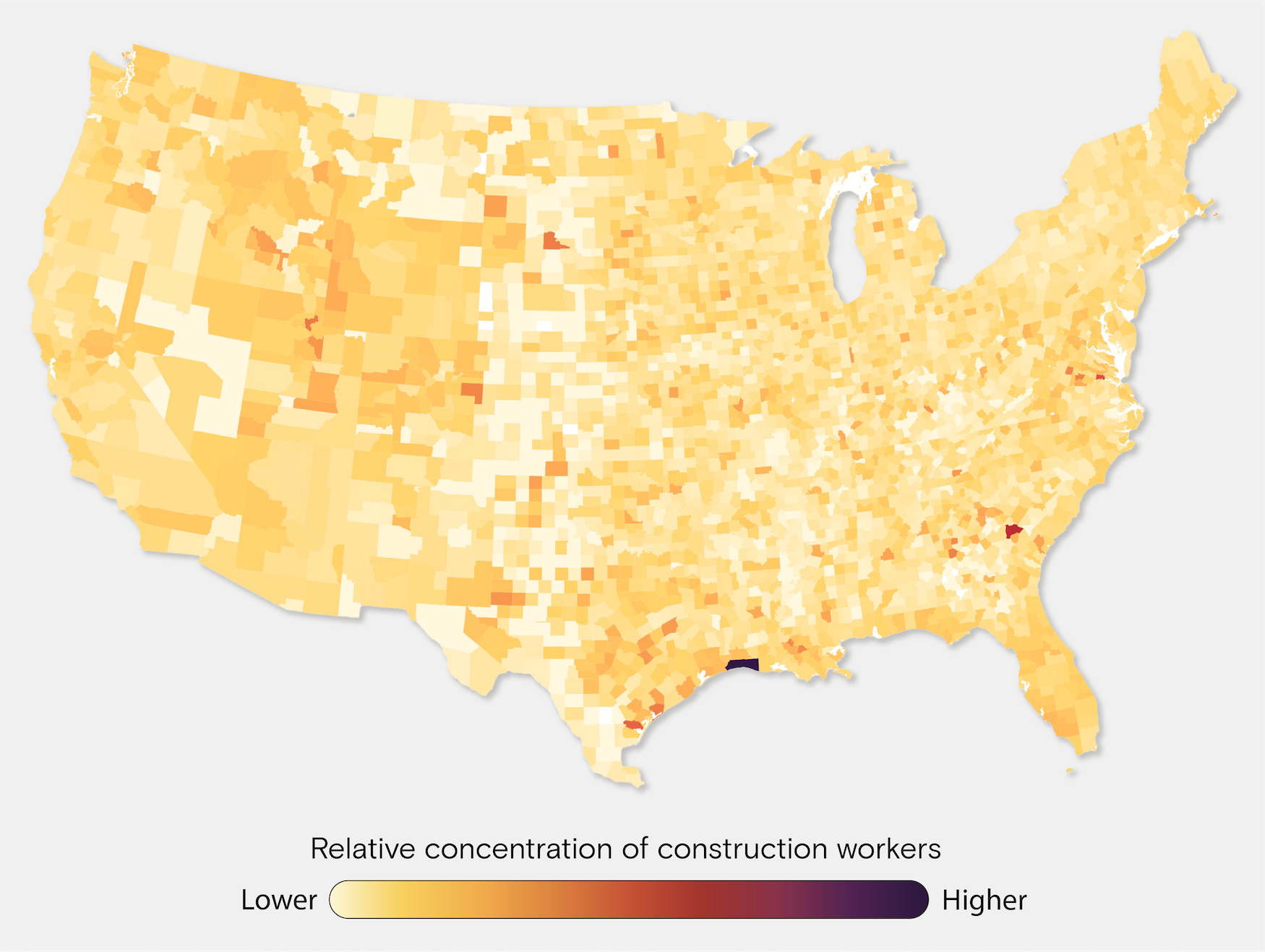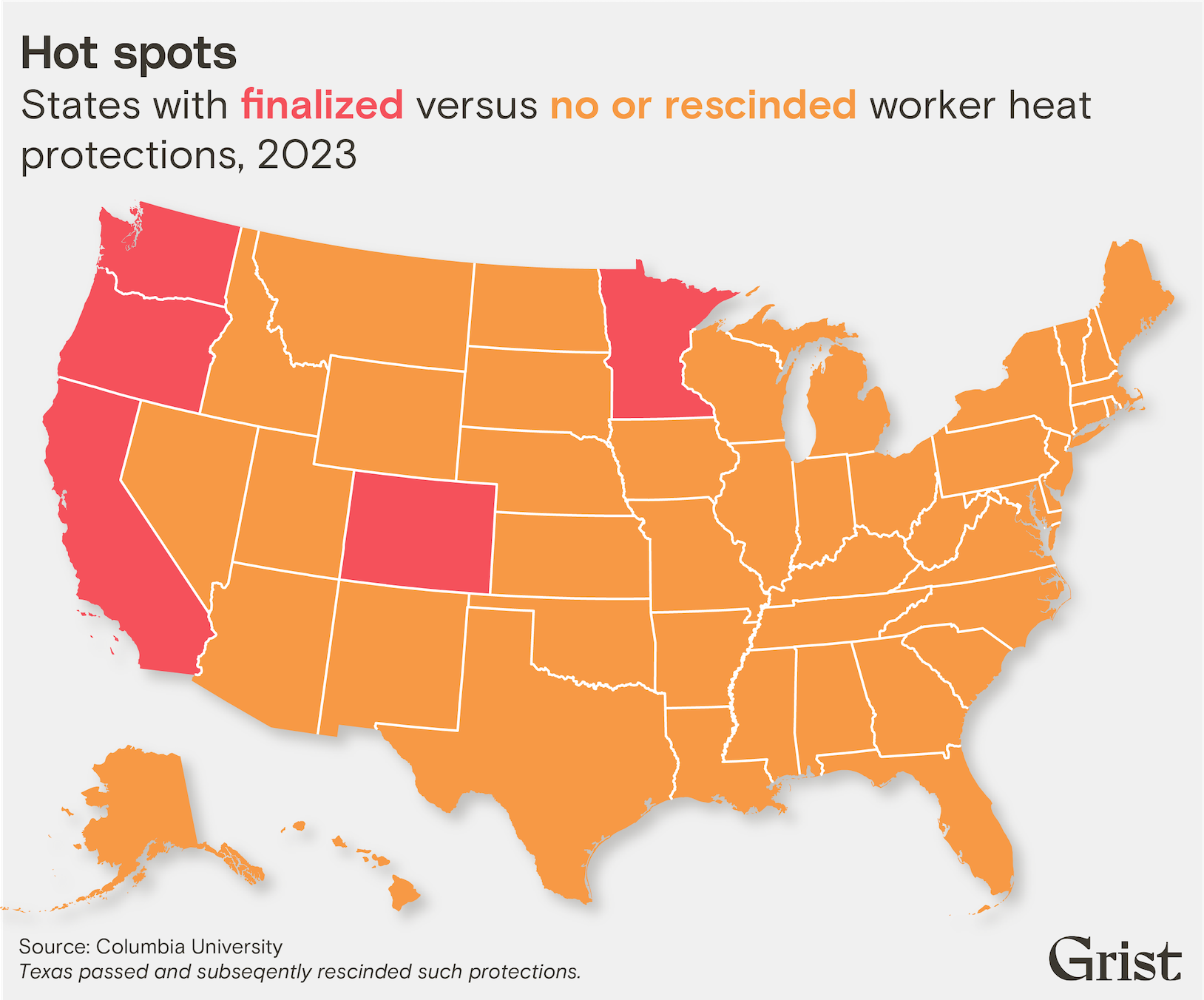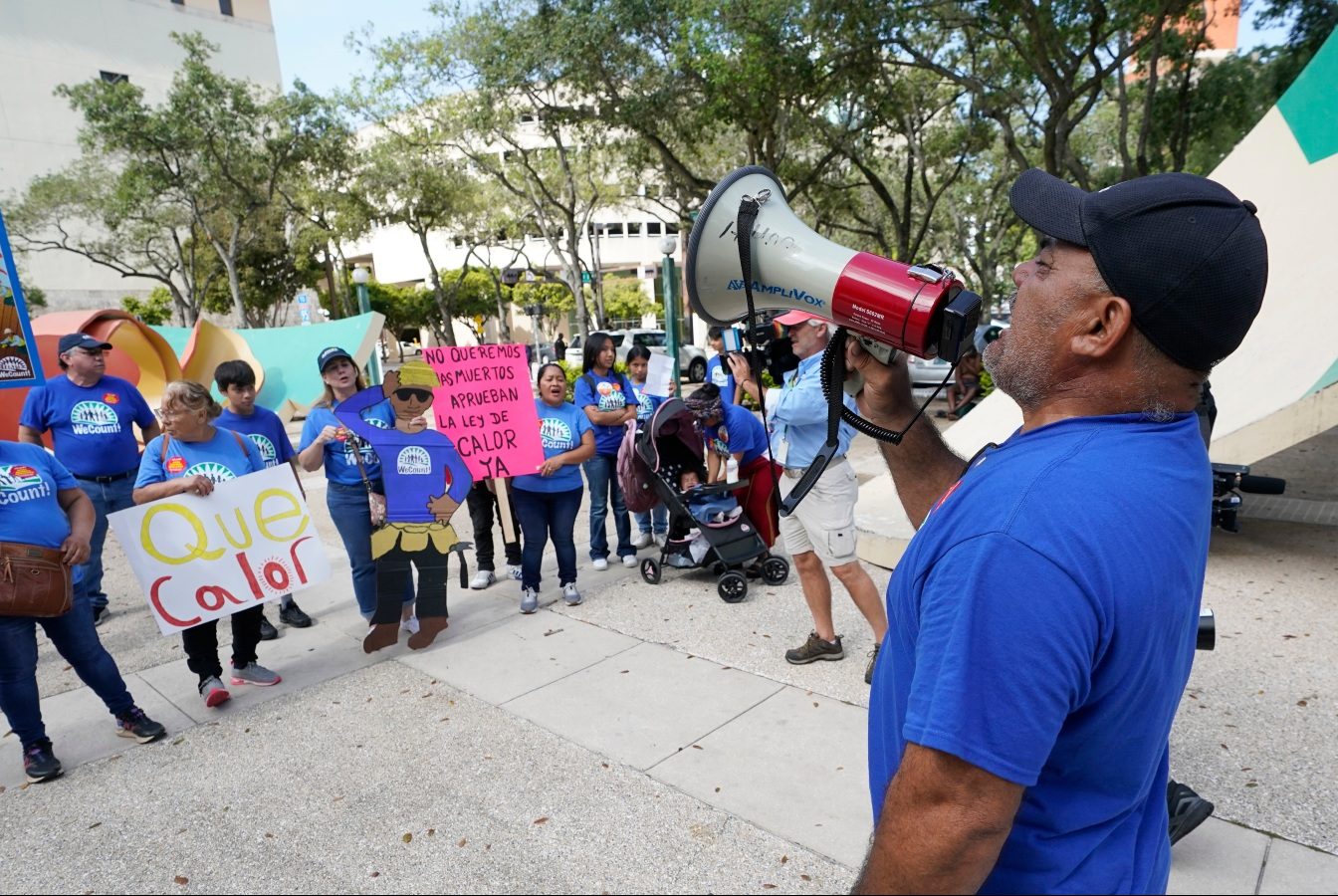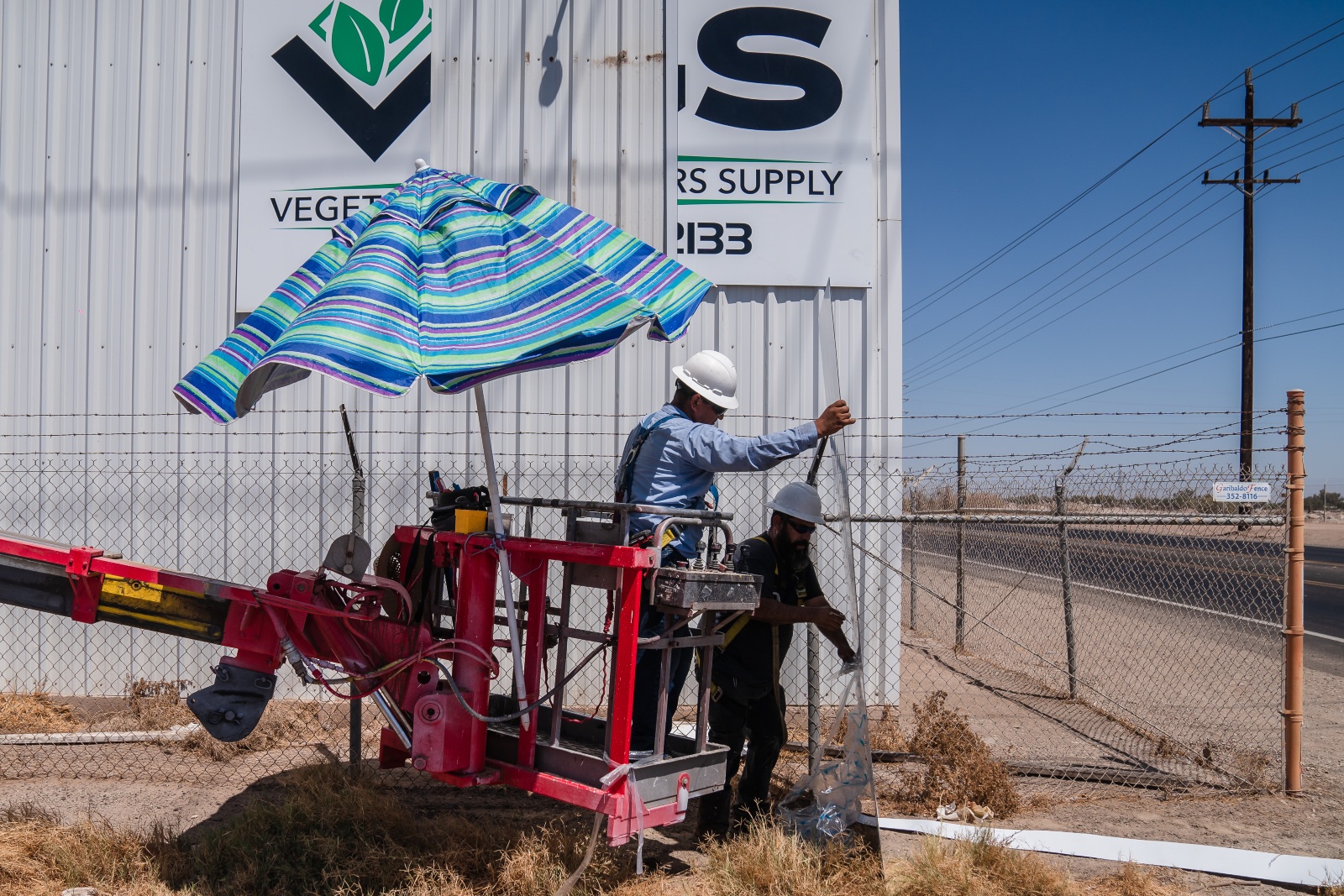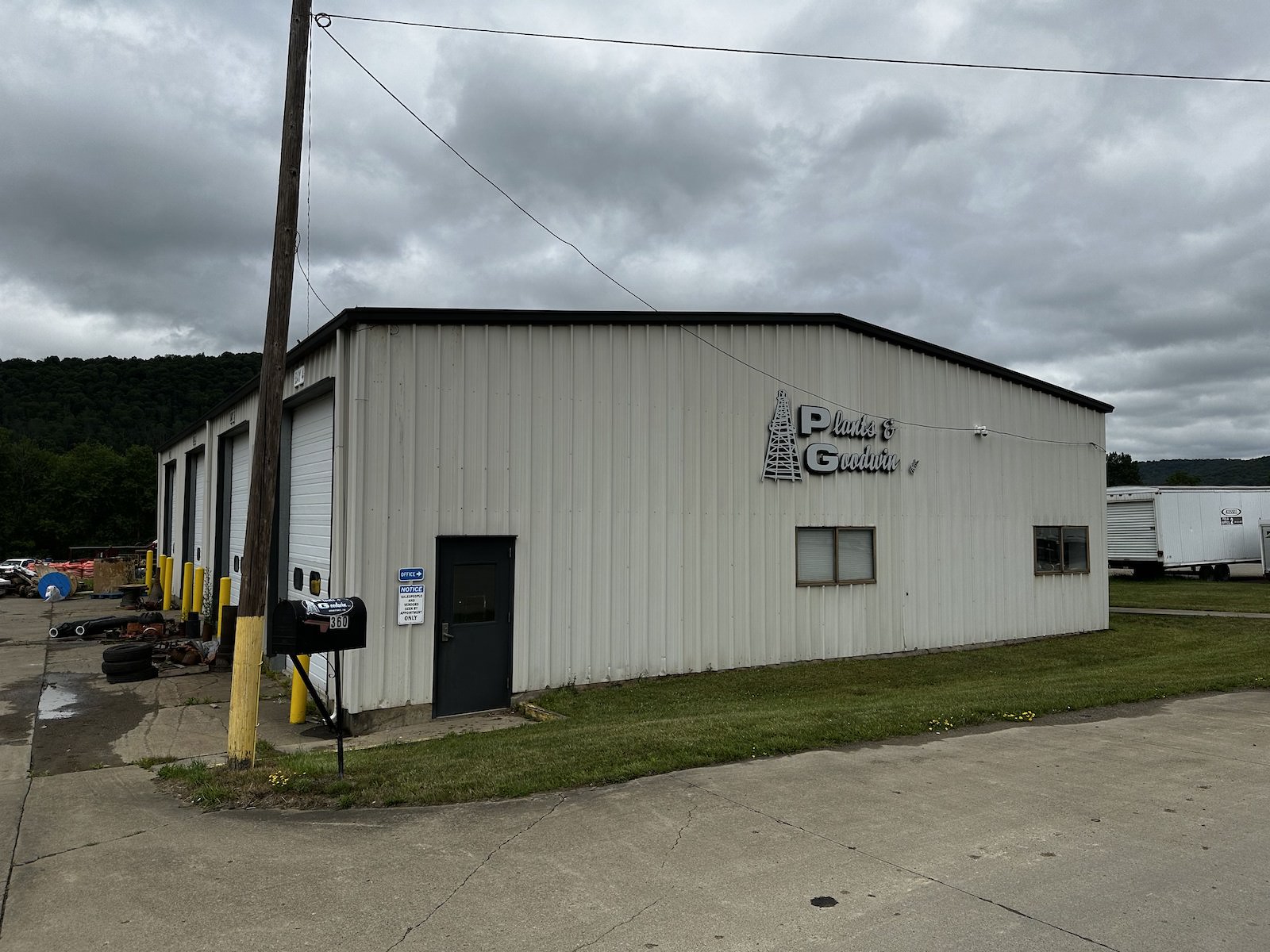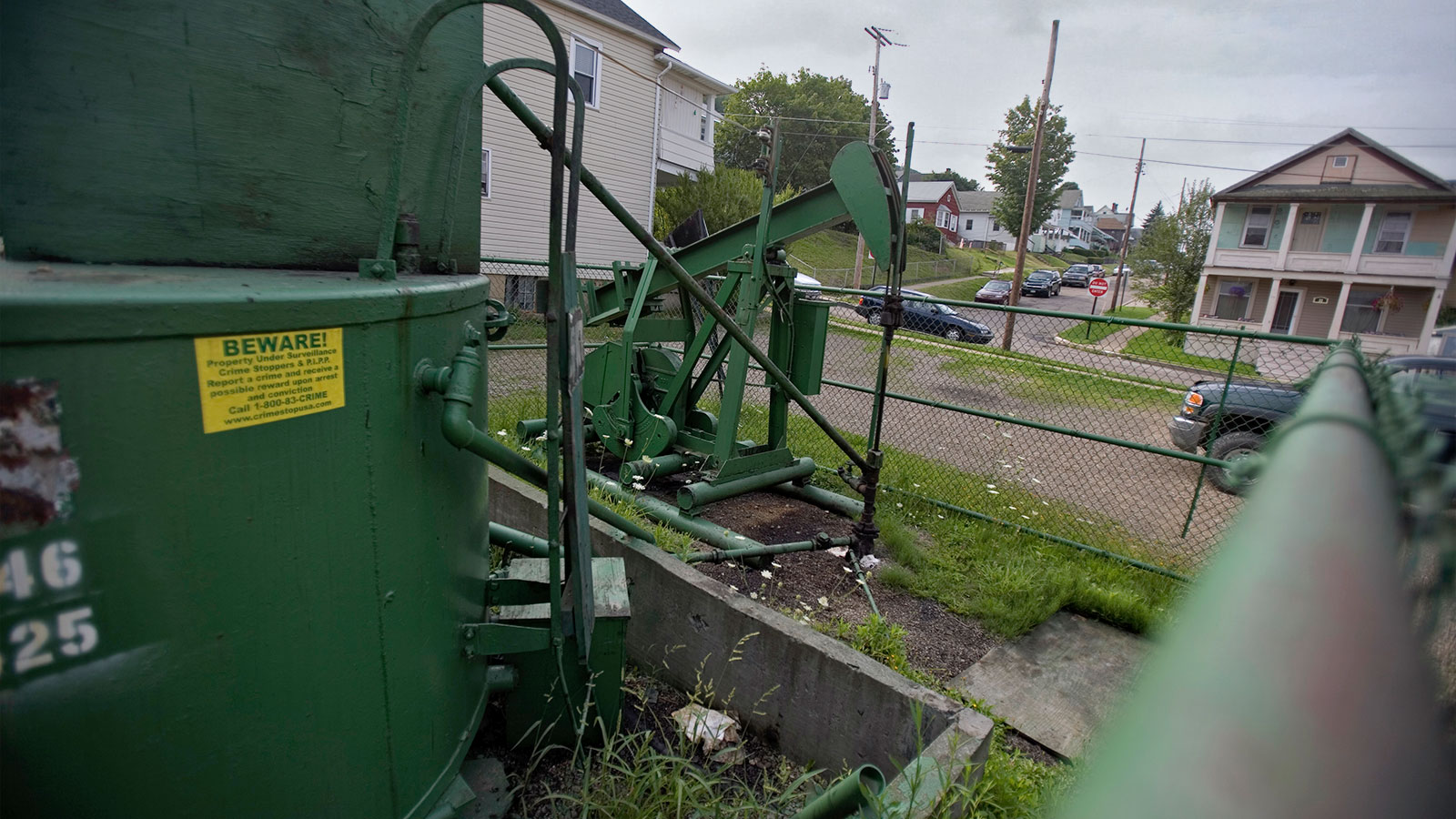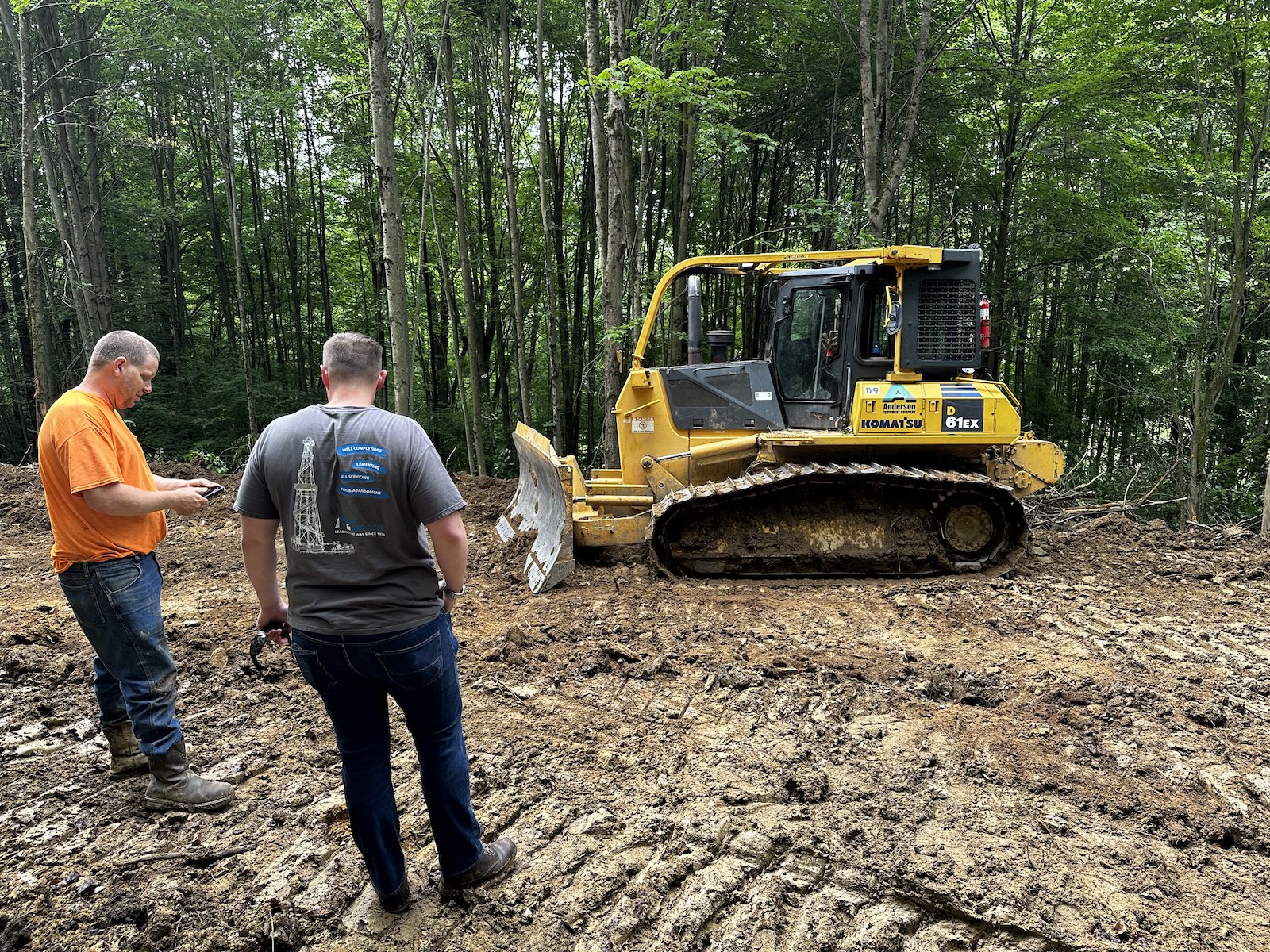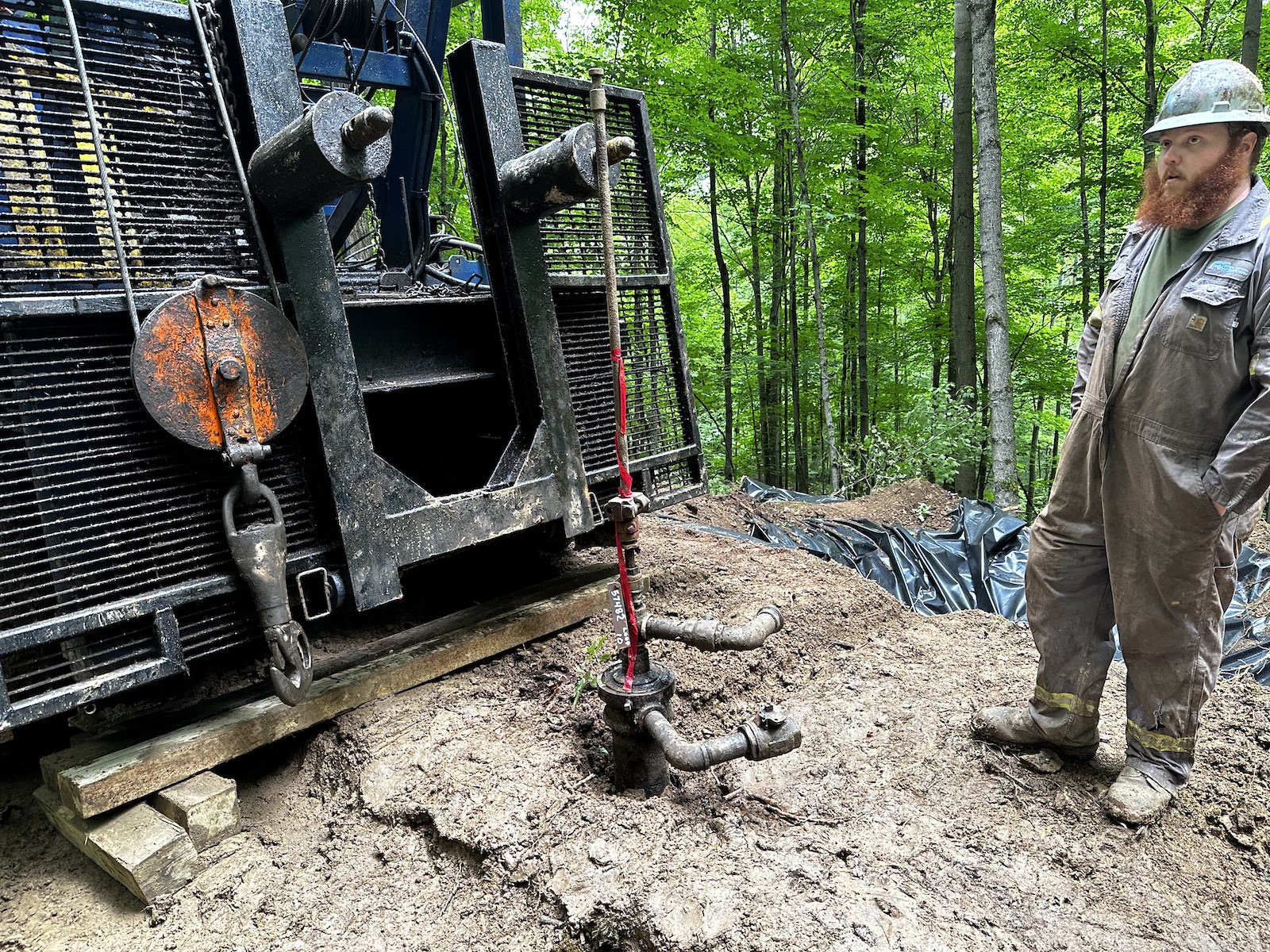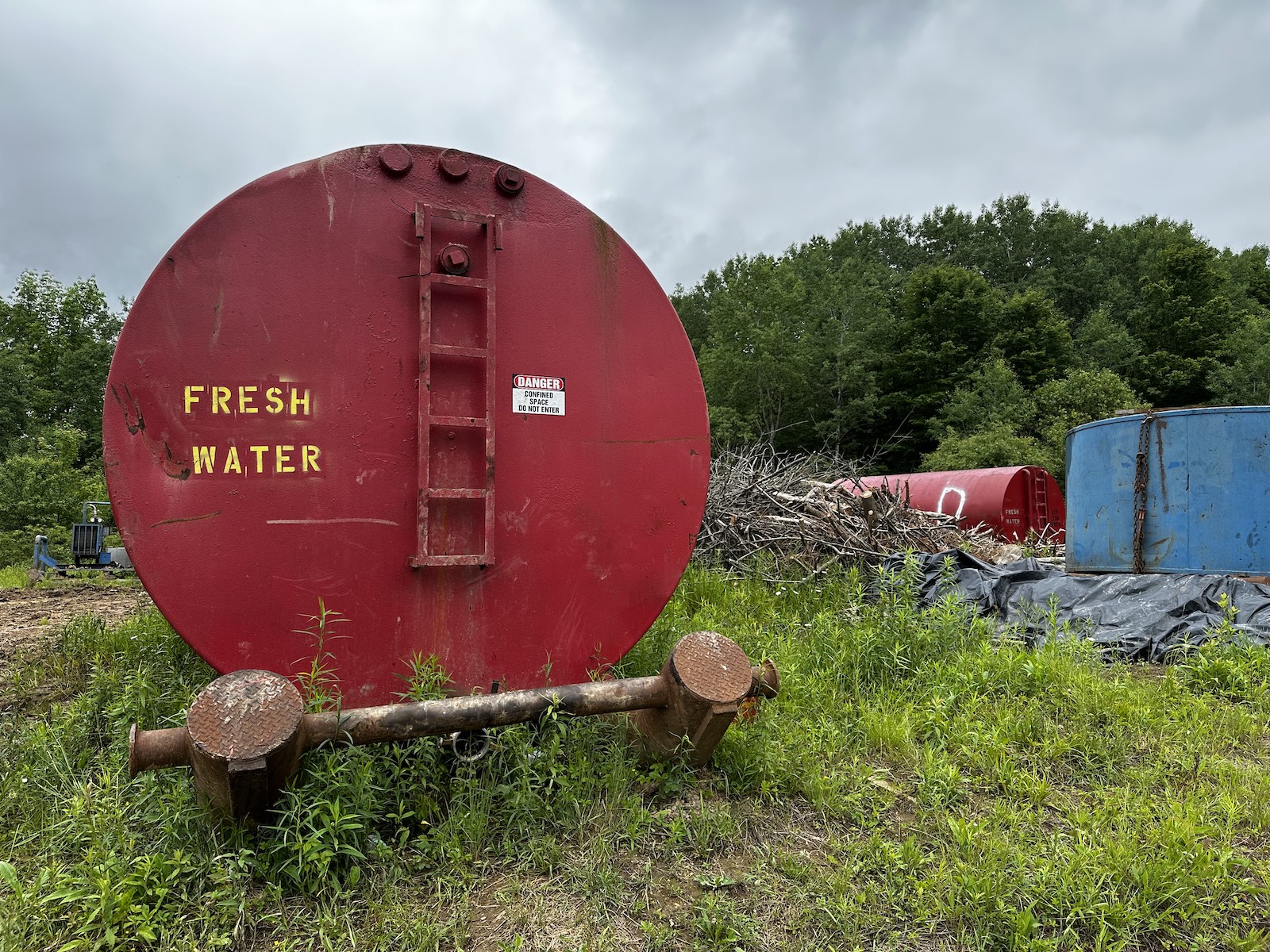Nearly five weeks into the UAW’s historic Stand Up Strike, there are just under 34,000 Big Three auto workers on strike in assembly plants and parts depots across the country. The latest escalation came on Wednesday, Oct. 11, when the union called on 8,700 Ford workers at the Kentucky Truck Plant in Louisville, Kentucky, to walk off the job.
For this episode, we’re bringing you a UAW strike update. You’ll hear from two guests: Chris Budnick and Lisa Xu. Chris is a striking Ford worker at the Kentucky Truck Plant and the co-chair of Unite All Workers for Democracy (UAWD). Lisa is an organizer at the labor movement publication and organizing project Labor Notes, and she was previously an organizer with UAWD.
Chris and Lisa bring us up to speed on the strike escalations, discuss how non-striking auto workers are participating in the Stand Up, and unpack the massive concession made by General Motors last week – the folding of their battery plants into the UAW’s master contract with the company.
Finally, we take a step back to reflect on the Stand Up Strike overall. We take stock not just on what was won contractually so far, but also on how far the union has come in the past year, and where it’s going.
Additional links/info
Support the show at Patreon.com/upsurgepod.
Follow us on Twitter @upsurgepod, Facebook, The Upsurge, and YouTube @upsurgepod.
Hear Teddy talk about the UAW strike on The Response podcast.
Hosted by Teddy Ostrow
Edited by Teddy Ostrow
Produced by NYGP & Ruby Walsh, in partnership with In These Times & The Real News
Music by Casey Gallagher
Cover art by Devlin Claro Resetar
Transcript
The following is a rushed transcript and may contain errors. A proofread version will be made available as soon as possible.
Lisa Xu: class warfare has been going on for a long time. It’s just that the working class needs to waken to the fact that, you know, capital has been waging class warfare against the working class, for decades and has sort of quelled, I think, a lot of the militancy and, you know, the ability to fight back.
And, you know, I think what’s been so amazing is seeing, everyone, including workers around the world kind of taking note of what’s happening in the UAW and seeing, you know, this Such, such an important historical union, kind of sees the reins and say, you know, this is not a one sided class, struggle.
Chris Budnick: it’s a bottom up approach at this point. now that we have a good start of, we have good leadership at the top to encourage us and engage us and educate us to do so. and from the bottom up and that’s where, you know, all these, you know, building.
militancy in the union, to constantly fight, a lot harder, with the, with these companies and, you know, and the hope is that it’s going to really build, our union and the labor movement. To, to heights we’ve never seen before
Teddy: Hello my name is Teddy Ostrow. Welcome to the Upsurge, a podcast about the future of the American labor movement.
This podcast covers the renewed militancy of the United Auto Workers, the legendary union that right now, for the first time in its history, is striking each of the Big Three automakers at once. That’s Ford, General Motors, and Stellantis, the owner of Chrysler, Jeep and other brands.
The Upsurge is produced in partnership with In These Times and The Real News Network. Both are nonprofit media organizations that cover the labor movement closely. Check them out at inthesetimes.com and therealnews.com where you can also find an archive of all our past episodes.
And quick reminder: This is a listener-supported podcast. So please, if you want it to keep going, head on over to patreon.com/upsurgepod and become a monthly contributor today. You can find a link in the description. We can’t do this without you.
A lot has happened since our last episode, and there’s a lot more that could happen before this strike is done. So, in this episode we’re bringing you a UAW Stand Up Strike update with two excellent guests.
It’s not completely necessary, but if you haven’t already, check out Episode 14 and 15 for more context on the UAW strike. There’s definitely a little more assumed knowledge in this episode.
We’re going to speed along to the interview, but just a quick set up: Right now, there are just under 34,000 Big Three Auto Workers on strike in assembly plants and parts depots across the country.
The latest escalation came on Wednesday, October 11. The UAW called on 8,700 Ford workers at the highly profitable Kentucky Truck Plant in Louisville, Kentucky, to walk off the job.
Reportedly, this came after Ford refused to improve its economic offer in bargaining. Rather than waiting till Friday to announce the new strike targets, as they’ve done in recent, UAW President Shawn Fain and the international initiated what appears to be a new phase of the Stand Up Strike. Escalations, or new calls for standing up, won’t be relegated to a routine Friday announcement, but rather, they could come at any time.
Anyway, I talked about this and more with my two guests, Chris Budnick and Lisa Xu.
Chris Budnick is a Ford worker of 11 years. He’s originally from Michigan but has moved around and ended up at the now-on-strike Kentucky Truck Plant. He’s also co-chair of the union reform caucus Unite All Workers for Democracy, or UAWD. Lisa Xu is an organizer at the labor movement publication and organizing project Labor Notes, and she was previously an organizer with UAWD.
Chris and Lisa helped bring us up to date as far as the strike escalations, but we also talked about how non-striking Auto Workers are participating in the Stand Up, as well as the truly huge concession made by GM related to its electrical vehicle operations. After the UAW threatened to strike its most profitable facility in Arlington, Texas, General Motors conceded to folding its battery plants, which are legally separate from its other operations, into the UAW’s master contract with the company. We’ll talk about why that is such a big deal.
And finally, we also took a step back to reflect on the Stand Up Strike overall. We took stock not just on what was won contractually, but also on how far the union has come in the past year, and where its going.
Teddy Ostrow: [00:00:00] Chris Budnick and Lisa Xu welcome to the upsurge.
Lisa Xu: Thanks
Lisa Xu: for having
Chris Budnick: us. Yeah. Thank you for having us.
Teddy Ostrow: To begin. Can you guys just tell listeners a little bit about yourselves? Chris, we can start with you. Yeah. Um,
Chris Budnick: well, I’ve, been a, uh, UAW member for 11 years come this November. I’ve been at 4 different plants originally from Michigan and, uh, I’ve been working for Ford, but I finally settled down here in, Louisville, Kentucky at Local 862, at the Kentucky Truck Plant and, I’m also.
Chris Budnick: Very active and other areas, with, unite all workers for democracy, co chair on that steering committee that. So that’s just a little bit about me.
Lisa Xu: so, I was also a UAW member, I was a member of the Harvard Graduate Students Union and organized for the local for a few years, and then [00:01:00] I was hired as the first staff organizer for UAWD, which is where I got to know Chris, and now I work for Labor Notes as an organizer.
Teddy Ostrow: Great, thank you guys so much for those introductions. so the last episode of the upsurge left off shortly after the 38 GM and Stellantis parts distribution centers, or PDCs as they’re called, the 38 of them across the United States were called to stand up, since then, 3 more facilities, I believe, have joined the stand up strike.
Teddy Ostrow: And I like to start with the most recent escalation and then we can go backwards and work our way to the present. So, Chris, I have a kind of packed question for you. we’re speaking on October 16th. As of October 11th, you have been on strike at your facility, Ford’s Kentucky truck plant. Can you give us, a 360 of that plant perhaps and explain why it’s so significant you guys have joined the fight?
Teddy Ostrow: [00:02:00] what this means is an escalation. Maybe we can start with the basics of the plant. For example, you know. What do you even build? And then we can move on to, you know, why do you think the UAW chose to strike the facility? What’s so significant about it to Ford?
Teddy Ostrow: And also, please tell us about the feelings, the energy of the membership of you in the plant leading up to the strike, as well as, you know. What it was like when it was finally called and how it’s been on the picket line since they went up.
Chris Budnick: Yeah, sure. that, that is a lot of questions. but yeah, absolutely.
Chris Budnick: yeah. KTP, you know, once I hired in, you know, they always, the Ford always, you know, bragged about how much, Money they make, So I’ll get into a little bit of that, but, Kentucky truck plant, they make the, F series super duty. That’s like the F two 50 to that five 50, along with the Ford expedition and the Ford navigator.
Chris Budnick: the KTP plant [00:03:00] produces a truck every 37 seconds. And one of those things they’ve told us just in orientation when we first got there. Is that, well, back in 2016, they said $15,000 in profit per vehicle that’s produced coming out of there. And now it’s gone up to like at least $18,000 per truck. And that’s every 37 seconds.
Chris Budnick: and they also brag about, how the Kentucky truck plant makes over half of Ford’s revenue, in North America. Which is pretty huge, but yeah, obviously we can see how much this plant is important to forward to keep it running, and to be able to use that in an escalating strike.
Chris Budnick: is a hell of a tool to use. so, you know, leading up to the strike, I myself was, doing 10 minute meetings with folks in my department. you know, like I was running four different meetings at one point for a few weeks, like with skilled trades and the [00:04:00] forklift drivers, repair guys. and then just the regular production, just to talk about what are we fighting for, and give them updates, what’s going on and get the communication started even from my local to them, by using our local UAW 862 app we have and signing up, signing those pledge cards.
Chris Budnick: you know, just really just educating and informing folks and just, and even just have a place to talk about something right before our shift starts. And I typically did it on a Wednesday, and to promote, to do a red shirt Wednesday in solidarity, to build up and to try to put as much pressure as we could on the company and on management, leading up.
Chris Budnick: To the deadline of the, of the contract, then my local also, and I helped a little bit with this with, doing practice pickets. We held 2 practice pickets and, we did a rally, after the [00:05:00] deadline. And, you know, and I’ll tell you you could see it just in the 10 minute meetings I did, even though they’re kind of small.
Chris Budnick: I mean, it. It’d be, I would have an attendance of, uh, maybe anywhere from 12 to 26, members, each meeting, you know, so leading up to it, you know, I was getting folks to chant, you know, who are we, UAW, And everyone was super excited once the deadline hit and then once we found out we’re doing this strategic, stand up strike where only certain plants are going out, you know, a lot of energy kind of dropped a little.
Chris Budnick: But I continued the 10 minute meetings and tried to keep, folks, you know, energized about it. and also educated on, I wasn’t even educated on it. I had to listen to that video UAW put out by the lawyer about how to work on an expired contract. What does this even mean? So it’s a lot of new stuff we’re learning.
Chris Budnick: as we’re going, and, I tell you,we’ve [00:06:00] only been able to escalate this contract campaign three months before the deadline and that is a very short amount of time and I used U P Ss
Chris Budnick: Leading up to a possible strike, right? And their contract campaign. I use them as an example all the time because we have the world headquarters in Louisville, local 89 teamsters and we visited their practice pickets. And I mean, but I use them as an example to folks in my plant to just let them know, like, how much, they escalated.
Chris Budnick: From July of 2022, all the way to July 2023 of their contract expiration, and they got to use all their tools, and their toolbox. And, well, they threatened that last tool of a strike and they got a historic contract. so I had to explain to folks that, you know, this strategy. And trust me, I was kind of mad too.
Chris Budnick: I was hoping all three, everyone’s [00:07:00] going to go out, me personally, but after thinking it through and talking to a few people, I realized, we have a lot of tools left because we only got to do a contract campaign for three months or less. So we have a lot of tools to use and we need to use it. And we have a lot of maneuvering we can do with the big three and all these plans we have.
Chris Budnick: So, that kind of got folks a little more energized but there’s, you know, there’s always not everyone, you can’t keep everyone happy and energetic about, you know, I think it was what, four weeks. Essentially we waited almost four weeks until we were called out.
Chris Budnick: we were called out on October 11th at like 5 38 PM, or at least my local president got a call then. I don’t know exactly. I didn’t get out of the plant until, 6 30 ish. And uh, yeah, that feeling was crazy. like I just, that, [00:08:00] that butterfly feeling in the stomach and just like getting all shaky or whatever.
Chris Budnick: And I just get out there and the road is just completely packed full of cars, you know, you have 3, 000 typically in a shift and so 3, 000 cars are all out in the road. but I walked down. See, where the picket lines are, see if there’s, you know, anyone doing anything, cause it was kind of last minute.
Chris Budnick: it was a lot different than getting the two hour, notice. and, I ran into my local president and he gave me some signs and he’s like, I need you to go out to this special location, which was a rail yard, ran by the Teamsters. And I just want to make sure that if they see picketers there.
Chris Budnick: They’re going to turn around and not pick up any trucks and get out of there. So, yeah, I mean, I think the energy is still pretty, it’s leveled out. you know, and we’ll, you know, we’ll see what, what happens. I mean, it’s, it’s fairly new and. But we can [00:09:00] probably, if you have any other questions I can answer.
Chris Budnick: I hope I kind of covered your packed question there. Yeah,
Teddy Ostrow: no, I asked a lot of you. so thank you. You did a great job. I mean, one thing I’m curious about is, you mentioned going to visit the Teamster picket lines. have you seen Teamsters visiting you guys? Like, I’m just curious about the community support given just how.
Teddy Ostrow: Huge of a plant. This is how important it is. And also just the surprise nature of it compared to previous, escalations that were, I mean, they were surprises then too, but there was every Friday, you know, two hours notice, as you said, and sort of an expectation that somewhere in the country, there will be, you know, folks standing up, but you guys.
Teddy Ostrow: Like smack dab in the middle of the week, Wednesday, all of a sudden it’s like, Oh, you’re going out. Um, and I’m, I’m curious, you know, how community support has been, and the energy sort of surrounding you guys.
Chris Budnick: Yeah. yeah, the Teamsters. And that’s one thing I forgot as I was walking out. And I walked down [00:10:00] through all the gates and I ran into my president.
Chris Budnick: I happened to run into the, organizer for local 89 Teamsters and also the communications director. they’re already out there with cameras and just helping out in any way they could just to get some signs and they’re very excited and they’re to support us, 100%, even when I was on my picket duty.
Chris Budnick: the special one, we had some teamsters come out and just like, Hey, did anyone in cross anybody crossed the line? I’m like, Nope, I haven’t seen anyone yet. Or no one’s, it’s just some supervisors leave and they locked up the gate. that’s another thing I kind of want to throw out there is, you know, we have 11 picket lines with about 12.
Chris Budnick: picketers at each one doing 4 hour shifts, you know, and so that’s about, that’s over 700, picketers a day and, we have 80 and so each week we can basically I have 5, 000 members on the picket line [00:11:00] and,that still leaves about 3, 700 or 4, 000, I think.
Chris Budnick: Members that so there’s a lot of folks that are have a high anxiety of wanting to get out to the picket line. So they can get a strike check and all that. but going back to community support, The community. Well, there’s this New York pizza place. the very first day donated a bunch of pizzas.
Chris Budnick: I got to try some of it. I used to go there for lunch here. They’re, real good pizza. And then also a big, pizza company most recently came out, called Bear Nose in Louisville. And they, I think they,They donated 60 pizzas, which is really cool.
Chris Budnick: And then, along with, I think Bowling Green, Kentucky, I think it’s, I forgot their local number, 2164. they make the Corvette. They came up this weekend in support. I think they brought some supplies. And then I heard, [00:12:00] Spring Hill, Tennessee, the GM plant there, 18, 1853. I think their local is, they’re coming up this week.
Chris Budnick: So, I mean, we have, uh. Yeah, I mean, a lot of, you know, union support and, I think the community support is slowly building up. When it comes, there’s like a small grocery store, that offers like 10 percent off to striking workers, all you have to do is show them your badge, you know, so that’s little by little, we’re getting, some more support,
Teddy Ostrow: I’m happy to hear that. It’s sort of, Building momentum moving on. I wanted to go to you, Lisa, just you’ve been doing excellent reporting on the strike for labor notes. And Chris just laid out this most recent escalation, but can you outline for us the strike overall from the.
Teddy Ostrow: PDC standups to now, I’m starting with the PDCs cause that’s, where I left off on the upsurge last time. but also [00:13:00] specifically on the PDCs, you know, I want to give you space to elaborate on that as well, because I know you’ve dug into them a little bit and you’re reporting, you know, what the purpose was and the significance of that specific escalation, but then please, bring us up to the present.
Lisa Xu: Yeah, definitely. So let me try to. Give the overview. So, on the first day of the strike, September 15th, you know, we had three assembly plants walk out. the next week, parts distribution centers, 38 of them across GM and Celantis, were taken out and Ford was spared. and then the following week, two assembly plants, one at Ford and one at GM.
Lisa Xu: came out, and Philantis was spared, and then, the next week, no escalations. we had a big win from GM, which I think we’ll talk about, later. And then, you know, following week, Chris’s plant, Kentucky truck plant was brought out. so, in the second week, You know, I think, we saw this major [00:14:00] escalation with, the parts distribution centers being brought out because these are, big profit centers for the big three.
Lisa Xu: so, in, the article I wrote for labor notes, I talked about how, the big three make a ton of money off of, uh, selling spare parts to dealerships. you know, I think a lot of people know, you know, when they have to like go to your dealership to, for some replacement part, the dealership, marks up that part, but the big three, also, makes a huge markup, on those parts as well.
Lisa Xu: So for those, warehouses to shut down,It, has an immediate impact, on their profits. and you know, another really, important aspect of this escalation, I think, is that unlike the assembly plans, which tend to be more concentrated in the Midwest and a few other parts of the country, the parts distribution centers are spread out all across the country.
Lisa Xu: there, you can see this on a map. and some of them, many of them are near [00:15:00] big urban. centers. So it’s allowed, it’s brought the strike to many more, Americans. And it’s also a way for people who support the workers to come out to the picket line if they don’t, you know, live near a big plant, in Detroit or the Midwest.
Lisa Xu: so those are some of the, I think aspects of like why this escalation the second week was so significant.
Teddy Ostrow: totally. And just to emphasize the part you mentioned about kind of bringing the picket lines to a broader swath of people around the country.
Teddy Ostrow: I participated in a canvassing of a dealership here in New York city where I am. And it was interesting to talk to people just walking by the dealership, that. You know, they said, Oh, auto workers are just in, in Michigan, right? They’re just in Ohio. And I said, no, they’re actually, they’re 45 minutes outside of New York.
Teddy Ostrow: You know, they’re in these various different places and you can totally [00:16:00] go out and show your support, show your solidarity, around the country. And I think that’s an important thing to emphasize and also a very smart kind of strategic. Decision, in addition to obviously hitting the companies where they hurt, you know, and their profits, I think, you know, one of the most inspiring elements I’ve seen of this strike is what folks who are technically not out yet, um, have been doing to support their union family who are,
Teddy Ostrow: I’m talking about rallies, you know, practice pickets, these convoys we are seeing where, you know. Line of Chrysler’s or Jeeps, um, circle the plants, but in particular, something I’m interested in is working to rule as it’s called, Chris, you only just joined the strike. So you’ve participated in some of these actions and Lisa, labor notes has been among the few outlets actually covering.
Teddy Ostrow: This element of the strike. Can you both tell me about some of these actions by non [00:17:00] strikers right now? what are their purpose? you know what? What does it mean that the UAW President Sean Fain has been explicitly calling on rank and file to join in in this way? You know, even though you’re not joining in on the literal strike, you are participating in the stand up in your own way, you know, with or without the approval of local leaderships.
Chris Budnick: I can start. yeah, I mean, I mean, ideally it’s good to kind of build these escalations of work to rule and, and, and like no volunteer overtime, you know, before the contract expiration. But, if you can, to some degree, but like I said, we didn’t really have that time.
Chris Budnick: and working on expired contract, we got to make sure. Yeah. that nothing is changing. Nothing is changing the status quo. So that, you know, and if management does it, then it becomes an unfair labor practice and to [00:18:00] report that to the, so that’s 1 of the 1 of the actions you can take while you’re concurrently.
Chris Budnick: Not on strike and working on an expired agreement. but I mean, from my personal experience, no, over no voluntary overtime, I was offered to literally the weekend before our strike, to work Sunday and Monday. So that would have been a double time day and a time and a half day. And it was very.
Chris Budnick: Tempting, but we all stood together and said, no, and it didn’t happen, which was really cool to see, work to rule. That’s something that’s going to have to be educated or, you know, with the. And practiced and because there’s a lot of, ramifications for doing, you know, from management when you’re work to rule.
Teddy Ostrow: Can you explain that a little bit just for listeners, educate us a little bit actually on what that means and why that’s significant. [00:19:00]
Chris Budnick: So yeah, work to rule the way I understand it is,we are given. An operating instruction sheet, we call ’em oiss at ford. other plants or GM and Chrysler, call it, or STIs call it differently.
Chris Budnick: but yeah, I mean, you work to exactly what your instruction sheet says, which are essentially made by an engineer. and, but you work at a normal. You know, pace while working to the rule to the exact instructions. and, but part of that is also a job safety assessment. they call them JSA’s at Ford.
Chris Budnick: So, if you’re not working to rule with that, like, if you put your safety glasses on your head, but you’re working to rule at the same time, you’re going to get, you know, you’re going to get disciplined for safety. So that’s going to be like a huge, so, and that, and when it’s just, if it’s just one [00:20:00] person doing it.
Chris Budnick: On the line, it can create a lot of issues, you know, so there has to be a lot of solidarity and a lot of teamwork to and it’s also a way to make sure, you know, that’s something we need to start doing just to make sure that our jobs aren’t overloaded in the plant, by working to rule and because anyone that’s kind of going above and beyond what they’re You know, that’s just more favors to the company and then they end up adding more work because you’re getting it done faster than the previous worker, that type of thing.
Chris Budnick: So, I mean, it’s something that has to be in practice and educated to the membership. And it’s, it’s kind of been lost over the last, you know, since tier 2 has been introduced into the contracts in 2007. it kind of, yeah, it kind of got lost there because of that division and the recession and everything.
Chris Budnick: from what I know, like I said, I only have 11 [00:21:00] years in, so I hired in afterwards, but from what the stories I’ve been told in the past, and my father works there. At Ford, you know, for about 30 years now that, yeah, I mean, that’s, there’s. Used to be a lot of militancy on the shop floor and, that’s kind of been lost over these contracts tier two, you know, divide and conquer contracts.
Chris Budnick: We’ve had
Teddy Ostrow: right. And it seems like you guys are sort of like on the mission right now to sort of build that back up. And especially through your caucus, that seems to be the case. But just to clarify something for folks who may not. Quite understand the logical connection here. It’s, but we’re working to rule is important because oftentimes, at all of our jobs,at, uh, UAW, um, you know, big three plant folks in order to do the job, you know, you have to kind of not work to rule, go above and beyond, just to get it done.
Teddy Ostrow: So when you work to [00:22:00] rule, it actually. Times can be an effective slowdown for the company and that’s contributing to the economic damage to the company of it. Did I get that right? Chris? I’m I’m I’m sort of that’s how I understand it. At least. Yeah.
Chris Budnick: Yeah. That’s I mean, it sounds about right. And I’m still, being educated on it myself and I’ve, Never really been able to experience it, too much.
Chris Budnick: I mean, I sure as hell threatened it. To a degree, in a different context. but, yeah.
Teddy Ostrow: I can imagine you have, however, on the other end, have been asked to perform not to rule. To be asked to do more than what’s, I guess, contractually, or, you know, technically instructed of you. Yeah. Lisa, did you want to speak on this as well?
Teddy Ostrow: This sort of non strikers participating in the stand ups?
Lisa Xu: Yeah, so I think, you know, we’ve covered kind of the range of activity from sort of [00:23:00] like stuff you would See and contract campaigns that other unions have run, like, you know, the practice pickets, the red shirt Wednesdays, the 10 minute meetings.
Lisa Xu: But like, this is stuff, you know, the UAW has not done in. I’m not sure anyone knows how many years. so, so that on its own is very cool. And then, all the work to rule stuff we discussed. So, If people want to hear more examples, they should read,this article that my coworker Keith Brower Brown, who’s also a former UAW member, published in Labor Notes, and, there are a lot more examples in there about how, you know, like, you know, you don’t always have to Just what examples of, you know, not making it easier for the boss, right?
Lisa Xu: Not doing favors for the boss. and, you know, one thing you mentioned, Teddy is Sean Fain is asking workers to do this and, you know, it’s to, put more pressure on the companies now for sure. But I think like the [00:24:00] strike, it’s also about kind of rebuilding the life of the union on the shop floor.
Lisa Xu: you know, that culture of militancy and organization that Chris mentioned that’s been lost, to, so to see that happening across all the plants, whether or not they’re on strike is just really amazing. And I definitely wish, you know, more of the media was covering it as well. And it’s being supported by you.
Lisa Xu: A. W. D. so that’s another important thing to know as
Teddy Ostrow: well. Right. Yeah. People should definitely go read that article because I mean, some of them are just,I kind of laughed at some of them,in, sort of support of the workers, like, you know, the fact that I think, some folks I’m forgetting exactly where it was, but they use bikes, uh, bicycles in order to like, kind of traverse the plant because it’s.
Teddy Ostrow: These are big facilities, right? And you need to get somewhere quickly. You’d get hop on a bicycle. There’s no contractual, you know, a requirement to do your job faster, you know, so folks are just walking instead, adding 15 minutes [00:25:00] to like sort of this process that would otherwise go faster.
Teddy Ostrow: And so I think that was like a pretty funny, but also really wonderful example of this sort of, you know, Hey, we’re not going to make this easy for you guys, even though we’re. even though we’re not striking right now,so moving on, I think, you know, I know there isn’t that much information about this right now.
Teddy Ostrow: but there’s really no way we can, we can’t touch on what appears to be the biggest concession. By a big three automaker to date, and that is GM’s promise to fold in their battery plants, their electric battery plants into the UAW’s master contract with the company. And listeners probably have heard about this potentially, help us understand why this is being heralded as such an enormous.
Teddy Ostrow: Breakthrough, you know, what does this mean for the workers for the union the industry? the whole nine yards I want to hear from both of you, but maybe we can start with you first lisa. [00:26:00]
Lisa Xu: Yeah, so Like you said, I don’t think we have Many more details and then what you described bit. So, the reason why this is significant is because GM and Solantis and Ford formed these joint ventures With non union companies to produce batteries in the u.
Lisa Xu: s. And they did that specifically To find this legal loophole through which they wouldn’t have to be covered by the UAW’s master agreement With the three companies. So for GM now to fold and say, you know, the thing which we told you was. Absolutely not possible. It’s now possible now that you’re threatening to strike us.
Lisa Xu: it’s pretty amazing. so previously, you know, with the battery plants not being under the master agreement, what that means is that the UAW has to individually unionize each plant. It has to go in and hold union [00:27:00] elections, one by one and then bargain contracts one by one.
Lisa Xu: Thank you. So that severely just disadvantages workers, at those plants. so now that they’re under the master agreement, they’re going to be subject. you know, not that we have the full details yet, I think, but they’re going to be subject to the same bargaining, that the workers, and the rest of the big three are under.
Lisa Xu: and then one other thing I want to mention, you know, I think there has been some back and forth, As to, you know, how much, how labor intensive is the production relative to traditional internal combustion engine production? And, you know, I think what many of us previously thought was that it was about, I think, 40 percent less labor intensive or more.
Lisa Xu: So now there’s more research now showing that actually when you factor in battery production in addition to just, you know, powertrain assembly, which is less labor intensive, [00:28:00] EV production as a whole, may not require less labor. So, so to be able to bring this. More labor intensive battery production, under the big 3 master agreement is a huge deal and, you know, it’s going to put pressure on board and philanthus, to do the same and hopefully, raise wages and improve working conditions for battery workers, outside of GM as well.
Lisa Xu: and to cite more labor notes, reporting, you know, my colleague, Louise Leon has written a lot about working conditions in these battery plants and they’re, you know, these workers are working with dangerous chemicals. I think OSHA is fining GM’s Ultium plant, now, hundreds of thousands of dollars just, because, you know, they, because they were non union plants, they didn’t previously have the same protections,as the union plant.
Lisa Xu: So. So yeah, so this is a big
Teddy Ostrow: deal. Right. Chris, do you want to talk on this as well?
Chris Budnick: yeah, it is a big deal. You know, it actually reminded me of,helping [00:29:00] Sean Fane campaign, for president. we did a little road trip down there to, Spring Hill, Tennessee, local 18, 1853, GM plant.
Chris Budnick: And, there’s all team plants, like being built, like different buildings, like all around the entire, you know, campus. And just, and there’s a lot of GMCH workers there. at the, in the complex and, you know, just hearing it, hearing from members, that are, you know, in progression or full on legacy and just hearing how just legally, divided they are.
Chris Budnick: it’s just like, man, we have a lot of work to do, so hearing GM. to promise to fold in its electric vehicle plants is to the, into the master contract is huge.
Chris Budnick: It’s absolutely huge. And it’s a factor of, now that they’ve done it [00:30:00] and the bargaining, it’s like, well, Stellantis and Ford do it as well because I can tell you from Ford’s end of things, we have a. battery plant being built as we speak and, about an hour South Louisville and then we also have the blue oval city in Tennessee,
Chris Budnick: that is, uh, going to be like, the next generation electric truck. And it’s going to be really huge to hopefully I think it’s important that we follow suit. We have no choice, but to. what I’m trying to say is that these companies are going full EVs.
Chris Budnick: They’re making promises, you know, to the government, to some degree,
Chris Budnick: they want to be like fully electric by 2035 and they keep changing like the year 2030, 2035, whatever the deal is. So, I mean, there’s a lot of folks in my plant that are like, why [00:31:00] is this important? Why are EVs so important? And it’s like, well. You know, if Ford has their name on it, that’s our work.
Chris Budnick: That’s our work. and we shouldn’t let it just go to some folks, at a very low wage. we need to adjust transition. You know, it freaked me out seeing that research done. I think it was back in 2018 about EVs saying that the labor, the amount of labor needed for EVs is less about 25, 30 percent less.
Chris Budnick: And, thank you, Lisa, for Putting out the, uh, that there’s been new studies done, that it might take more. so I haven’t read into that. it is just so important to make sure that the big 3 and the UAW. Come together on that and get all the plans, under our master agreement. So we can, continue
Chris Budnick: mainly for a just transition and as Sean family [00:32:00] says, you know, for, you know, social justice and economic justice,
Chris Budnick: Thank goodness we have the leadership in the UAW to do it.
Teddy Ostrow: Right. No, thanks.
Teddy Ostrow: Thanks for that.
Teddy Ostrow: And I do recommend to people that they go and read and in these times article, really in depth article by, Lisa’s colleague, Luis Feliz Leon, explaining sort of the. Honestly, horrific, conditions,of these chemical spills, explosions, he digs into some like police reports, that I think hadn’t been covered before.
Teddy Ostrow: So it’s a great piece. and at your company, Chris, I wanted also to mention that up until this moment, there, the means through which it seemed the UAW was trying to sort of push up against this turn among the big three to the EVs and to try to Sort of use that turn to undermine your guys’s hard fought, contracts and standards was to give the right to strike over plant closures to the workers, which is [00:33:00] something that Ford actually, gave up, as I understand it, in negotiation so far that if they are going to close these plants and then go off to, you know, not a less friendly union state or even to Mexico to open up some of these E.
Teddy Ostrow: V. plants. no, we’re going to strike over it. Give that ultimate leverage that you guys are using right now across the country. and I think just to use that to turn, you know, that’s a pretty big win in itself as well at Ford. But to end, I’d like to ask you both to take a, take stock a little bit, on what’s happened over the course of this strike so far, you know, the strike isn’t over, obviously.
Teddy Ostrow: Yeah, absolutely. it may be several weeks, um, still, but who knows? We’ll see, feel free to talk about what’s already been one, but also beyond what is contractual, you know, cause I think I’m talking a little bit more broadly, you know, for one, I think, and I hope that we have already seen a sort of.
Teddy Ostrow: Showcasing for the legitimacy of the kind of militant unionism,[00:34:00] that you guys at UAWD have fought for, this sort of class warfare orientation, perhaps, that is required of workers to win what they deserve, and I think that’s hugely important for the entire labor movement, so please, you know, take this wherever you want to take it, but how are you measuring the success or failure of this strike so far, you know, how, what has been won already, What is yet to be achieved?
Teddy Ostrow: But ultimately, the question is, what can we already say about the UAW’s historic standup strike?
Lisa Xu: well, first I think, you know, Chris and I organized together in UAWD for a few years before this. And I don’t know what you think, Chris, but this has. exceeded my wildest imagining for how much, you know, we, the reform movement would be able to accomplish in just, you know, a couple of years.
Lisa Xu: I think first, being able to elect the whole slate that we ran, the slate that, yeah, that Sean headed up and then just seeing [00:35:00] just what a drastic I mean, still, you know, incomplete, but so far, like, just what, a new president and leadership, has been able to accomplish. So, I think just the story of that is very important, and I hope that inspires, workers organizing to reform their own unions.
Lisa Xu: And, yeah,
Chris Budnick: can I comment on that? Lisa? Go ahead. Well, I mean, it’s it’s yeah, it’s wonderful. And you’ve done absolute amazing work with us at and we sure do miss you. We really do. but, yeah, I mean, I just wanted to point something out and I’ll let you finish your thoughts. but, I just want to point out that, you know, it’s.
Chris Budnick: the kind of goal of reform in my mind, I guess my personal opinion was to, you know, do a top down approach, and yeah, and it is absolutely crazy that we were able to achieve that as UAW members. and supporters to [00:36:00] get that done, which we, you know, for the most part got,you know, we started to reform it and obviously we’re seeing.
Chris Budnick: The great work that’s coming out of it. The great ideas. but now, I mean, it’s a bottom up approach at this point. now that we have a good start of, we have good leadership at the top to encourage us and engage us and educate us to do so. and from the bottom up and that’s where, you know, all these, you know, building.
Chris Budnick: militancy in the union, to constantly fight, a lot harder, with the, with these companies and, you know, and the hope is that it’s going to really build, our union and the labor movement. To, to heights we’ve never seen before and let’s do it. Let’s go. So, thank you for mentioning that Lisa.
Chris Budnick: I’ll let you continue.
Lisa Xu: Oh, yeah. No, thank you for mentioning that. I think you’re right. I think what we’re seeing the UAW is, [00:37:00] you know, we’re seeing sort of some change at the top that is sparking the change at the bottom, which is really the change that we really need to sustain reform and this.
Lisa Xu: struggle going forward. And, you know, Teddy, I think you mentioned class warfare. Well, the class warfare has been going on for a long time. It’s just that the working class needs to waken to the fact that, you know, capital has been waging class warfare against the working class,for decades and has sort of quelled, I think, a lot of the militancy and, you know, the Ability to fight back.
Lisa Xu: And, you know, I think what’s been so amazing is seeing, everyone, including workers around the world kind of taking note of what’s happening in the UAW and seeing, you know, this Such, such an important historical union, kind of sees the reins and [00:38:00] say, you know, this is not a one sided class, struggle.
Lisa Xu: and I mean, that for me has just been, you know, even though like, I was A part of it from the inside and now like just looking at, you know, looking at it a little bit more from the outside at labor notes. it’s just amazing to see honestly, surreal. I just can’t emphasize that because it’s been such a long time coming.
Lisa Xu: And I think so much is happening so quickly that, you know, I, you know, I just, I’ve been like, just truly very inspired watching all the workers. yeah. in the strike and, you know, also the way Sean Spain has been, leading the fight. So, yeah, those are just some of my own personal feelings about it.
Chris Budnick: Yeah, it’s, it’s been a rush and I know you probably feel the same way, Lisa, sometimes it’s just like after every type of campaign, you think that you can take a little break and then you can’t, you don’t [00:39:00] get a
Lisa Xu: break, Chris.
Chris Budnick: No, it’s a never ending fight, and that’s, you know, I always believe in, Having good balance and everything and things have been out of balance, over the, over the decades, the corporations have really built power, over the workers and, it’s time for us to fight back and, and have the leadership,engage it, You know, and, educate us and get us where we need to be.
Chris Budnick: cause that is just, yeah, just union members itself, ourselves. We need to have to, and just workers join a union, any workers out there that are non union. I mean, your boss has to say. in the union, you have a say, you know, and it takes time to, to organize and build that militancy, but we’ll get there, you know, even in the UAW, very militant.
Chris Budnick: Then kind of lost it there for a little bit and now we’re back, or we’re [00:40:00] getting back and it’s going to be a constant struggle, constant fight, and it’s going to be never ending. and, yeah, I mean, I kind of like where we’re going here. I just, well, I wanted to mention some of the gains, you know,
Teddy Ostrow: yeah, if you want to talk about the concrete wins as well,
Chris Budnick: Yeah. Cola. Cola is a good, uh, topic because there’s a lot of folks, has that have said, union members. Cola’s gone. It’s gone forever. We’re never getting it back. And the funny thing is it just took one plant, the Bronco and the Ford Ranger plant at Ford for, Ford to fold,and give us back Cola.
Chris Budnick: you know, right now it’s just, I mean, I’m assuming it’s all in writing, you know, so, and that’s huge and not to mention they’re going to go by the 2007 Cola language. That’s not going to be some new. Improved type of language that’s [00:41:00] going to, that’s going to, you know, basically be half cola or Coke zero as Sean Fang called it.
Chris Budnick: but we really need to look at, I mean, we talked about EVs and how we want our, any EVs that the companies are, Making that it’s under our master agreement, that’s obviously a huge thing, but there’s also, as a tier 2, I don’t have, a pension, a defined pension or healthcare when I retire.
Chris Budnick: So, for a lot of years, I’m not good on all that financial stuff, you know, but I’m also not going to retire for another 25 years. So, I mean, it’s important to me to have a good retirement and, but I also saw my 401k drop like 40 grand in 2021. You know, and I’ve only gotten half of that back since, um, so that’s very, I mean, things can happen with the [00:42:00] 401k.
Chris Budnick: that wouldn’t happen with a pension because it’s a guaranteed amount of money. so, I mean, those are things that, That are very important, but. Also, getting retirees a raise, they need a raise, some type of cola to keep up with inflation. so I think it’s 2003, 2004 was the last time they got a raise.
Chris Budnick: you know, I mean, hell that’s almost 20 years. Retirees have gone without a raise and they need a raise not to mention legacy, union family that are going to be going out and retiring.
Chris Budnick: they’d be nice if they’re caught up with, you know, the times and inflation and all that stuff. I want to make this very clear what I’m expecting on a wage increase. because cola was suspended back in 2009. Um, and these are basically my calculations, but we need a 20%.
Chris Budnick: upfront increase on wages just to catch up to where we would be if we had [00:43:00] cold of the last. You know, 14 years, uh, so 20 percent increase and then after that, they can give us, I mean, we got cola back. So let’s, let’s get some raises, you know, regular raises to get us above the standard. so we can set that standard for other workers across the country, you know, a union or not.
Chris Budnick: And that’s that’s 1 thing I wanted to really mention and say clearly. so there’s 10 percent up front is not good enough. It’s not even close. To where we should be, and, we need at least 20.
Teddy Ostrow: Well, thank you for kind of going through some of what was one, but also what is still obviously, left on the table. And there, there appears to be a lot left on the table, but there’s also a lot more of you guys who aren’t out on strike yet, technically. So, you know, given the trend of this strikes, given the successes so far, I think, you know, it’s, it’s, not unlikely that you guys will be able to win a lot more. but [00:44:00] I appreciate you both going into sort of what was more broadly one so far and your point, Chris, about, you know, winning the top down, but now the fight begins really, on the bottom up and we’ve been hearing, I guess, a little hints of that in that, you know, uh, we’re trying to, build the culture of, Work to rule actions or practice pickets or rallies because, you know, this is something we’ve emphasized on this show before.
Teddy Ostrow: This is the beginning of a reform in the UAW,to the militancy that, made your union so historic, you know, and you’re right, the fight never ends
Teddy Ostrow: Well, Chris Budnick and Lisa shoe. Thanks for joining me on the upsurge.
Lisa Xu: Thank you.
Chris Budnick: Thank you.
Teddy Ostrow: You just listened to episode 16 of The Upsurge.
The Upsurge is produced in partnership with In These Times and The Real News Network. Both are nonprofit media organizations that cover the labor movement closely. Check them out at inthesetimes.com and therealnews.com where you can also find an archive of all our past episodes.
You can show your support by sharing the episode on social media, giving us five star rating and writing a review.
Follow us on Twitter @upsurgepod and Facebook, The Upsurge. You can also listen to us on our YouTube channel, The Upsurge.
But the best way to show your support is by becoming a patron of the show at patreon.com/upsurgepod. We are a listener-supported podcast and can’t continue without you. You can find a link in the description.
Thank you to all our Patreon supporters. We could not do this without you, but a very special thank you and shout out to our patrons at the Business Agent tier or higher.
Greg Kerwood
Emil McDonald
Steve Dumont
Jason Cone
Jason Mendez
Tony Winters
David Allen
Tim Peppers
Dimitri Leggas
Randy Ostrow
Mack Harden
Timothy Kruger
Nicole Halliday
Ed Leskowsky
Chris Schleiger
Corey Levensque
Matt Cooper
Marlon Russo
Martin Omasta
Dennis Haseley
Enzo N
Probably Fang
Andy Groat
And Audrey Topping
All of your support means so much.
The podcast was edited by myself
It was produced by NYGP and Ruby Walsh.
Music is by Casey Gallagher.
The cover art was done by Devlin Claro Resetar.
I’m Teddy Ostrow. Thanks for listening and catch you next time
This post was originally published on The Real News Network.
